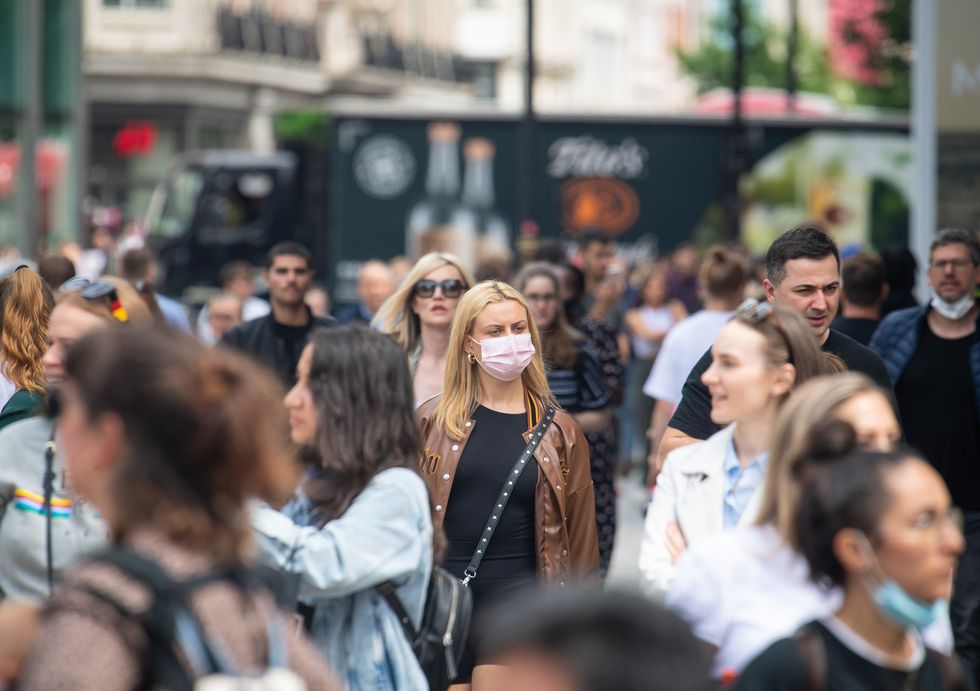Covid-19 case rates falling in every local area of England for first time

A woman wearing a face mask among a crowd of pedestrians on Oxford Street, London.
Dominic Lipinski

Covid-19 case rates have fallen in every local authority in England – the first time this has happened in all areas simultaneously since comparable figures began more than a year ago.
Not one of the 315 local authorities recorded a week-on-week rise in rates for the seven days to July 26.
A nurse preparing a Covid-19 vaccine.
Nick Potts
Middlesbrough currently has the highest rate of new cases in England, but this is down sharply week-on-week from 1,421.5 cases per 100,000 people to 695.8.
The biggest fall was recorded by Redcar and Cleveland, which is down from 1,520.2 to 668.6.
Breckland in Norfolk saw the smallest fall, where the rate has dropped slightly from 160.8 to 157.2.
As recently as July 16, only four of the 315 local authority areas in England were recording a drop in rates.
Since then an increasing number of areas have started to see their rates fall, finally reaching a total of all 315 areas on July 26.
Data covering the most recent four days (July 27-30) has been excluded as it is incomplete and does not reflect the true number of new cases.
Comparable figures for Covid-19 case rates date back to June 2020, when mass testing for coronavirus was first established across the country.
Masks are still being warn in many public spaces.
Ben Birchall
From that point onward, there has always been at least one local area of England where case rates have been rising – until now.
The latest figures suggest the third wave of coronavirus, which began at the end of May, might have peaked.
The average number of new cases of Covid-19 reported each day for the whole of the country has been falling for the past week.
But separate figures published on Friday by the Office for National Statistics (ONS) suggest Covid-19 infections are continuing to rise in most parts of the UK, meaning it is too soon to say that the peak has definitely passed.
The number of infections provides a snapshot of the prevalence of Covid-19 within the entire community population of the UK, and estimates the percentage of people who are likely to test positive for the virus at any one point in time – regardless of when they caught the virus, how long they have had it, and whether they have symptoms or not.
It is based on a sample of swab tests collected from households across the UK.
By contrast, the number of new cases of Covid-19 reported each day includes only those people who have actually tested positive for the virus, and is therefore affected by how many people are coming forward for tests, or who are taking a test because they know they have coronavirus symptoms.
There is also a slight lag in the ONS data, with estimates available only up to the week ending July 24.
Any change in the long-term trend for infections could become clearer in future weeks.